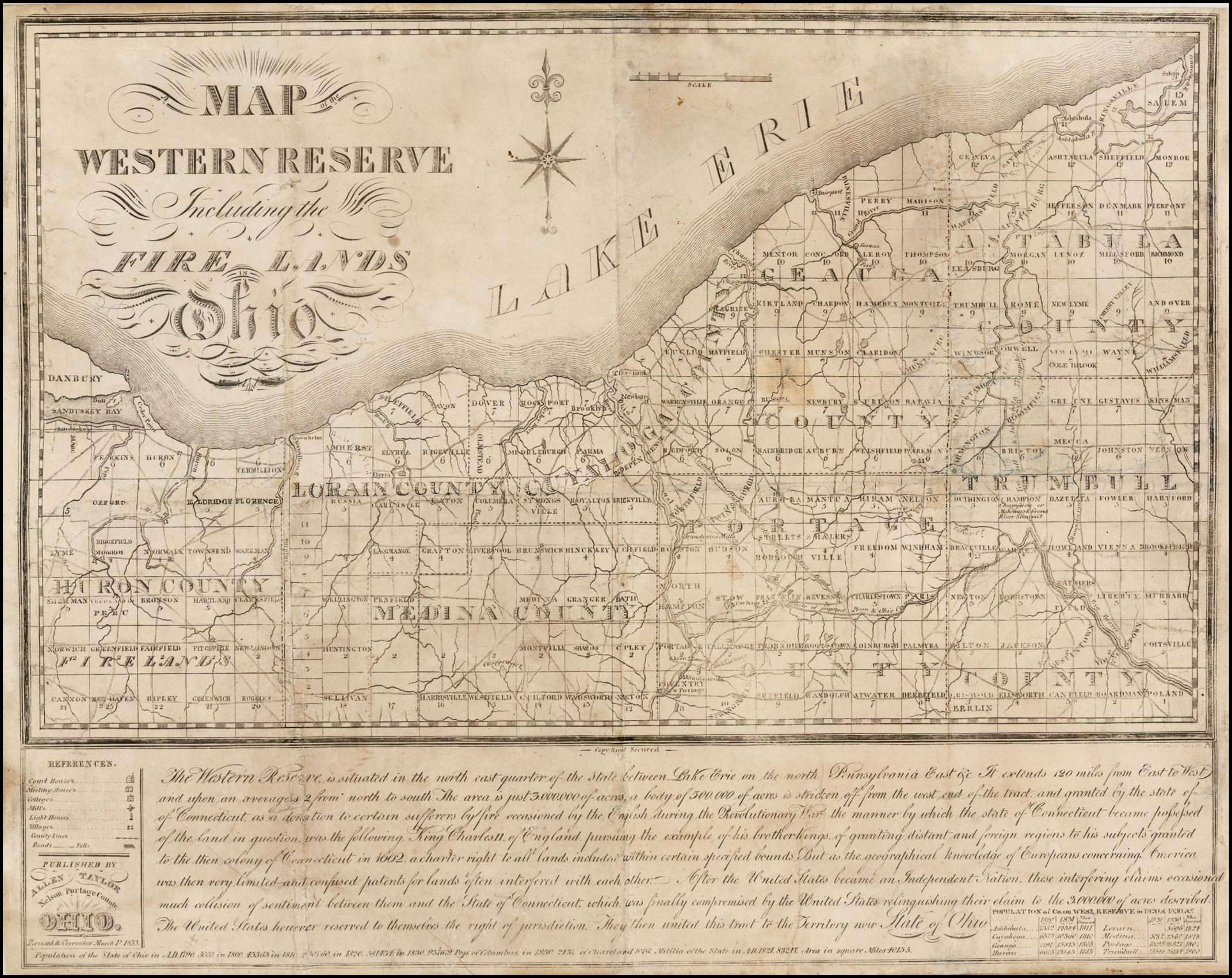Why northeastern Ohio was settled by families from Connecticut
The surprising legacy of the Connecticut Western Reserve
In the aftermath of the Revolutionary War, the fledgling United States was 13 colonies stretched along the Atlantic coast and extending only as far west as the Appalachian Mountains. The vast areas from there to the Mississippi River remained up for grabs—with claims made for parts of it by England, Spain, France, multiple Indian nations and at least four of the constituent United States.
That's right. Based on their original royal charters, both Connecticut and Massachusetts claimed western lands extending to the Mississippi River between their north and south parallels. Pennsylvania and Virginia had their own claims on what would soon be referred to as the Northwest Territory.
The state claims were irrelevant until 1783, when the Treaty of Paris was signed between the U.S. and England, formally ending the American War of Revolution with unexpectedly favorable terms for the United States. England was ceding sovereignty to the U.S. of all lands east of the Mississippi, excluding Spanish Florida but including all the territory won from the French just 20 years previously in French and Indian War. This was a move to separate the U.S. from its alliance with France and develop it as a strong economic partner.
Over the next several years, each of the states with trans-Appalachian land claims negotiated agreements with the Federal government to cede their claims, sometimes in exchange for war-debt relief or other considerations. These cessions set the stage for the establishment of the Northwest Territory in 1787, the first step in the later admission of six new states to the union.
Except that Connecticut did not cede all its western lands—at least right away. In its 1786 cession agreement, Connecticut reserved the eastern section of its claim, more than three million acres along the Lake Erie coastline, including future Cleveland, to be used in part for compensation to war victims and mainly for commercial land development. The boundaries of the reserve were set at 120 miles west of the Pennsylvania border and as far south as the 41st parallel.
The state then sold its rights to the territory to a group of private developers, the Connecticut Land Company, which proceeded to survey the land, laying out future counties and townships. At first the region was to be called New Connecticut, but the Western Reserve name stuck, Today, the name is best remembered as part of the name of the region's premier university, Case Western Reserve.
For the next 14 years, settlers began to trickle into the Western Reserve, mostly coming from Connecticut. We'll see how the Josiah Smith family that settled in Geauga County were a part of a migration from the town of Cheshire, Connecticut, outside New Haven. But settlement remained a challenging proposition and the early growth was slow. Part of the problem was the uncertainty over the reserve's legal status. People were reluctant to put down their life's savings for title to possibly contested property.
In 1800, an act of Congress guaranteed the legality of Connecticut Land Company titles. Later that year, the state of Connecticut ceded the reserve to the federal government and it was absorbed into the Northwest Territory. Originally, the entire area was designated as one county, Trumbull County with Warren as its capital. Other population centers were at Youngstown, Akron, and Claeveland (they later dropped the a).
Ohio, including the Western Reserve, was admitted to the United States on March 1, 1803. Even so, sales in the reserve continued to be sluggish and the Connecticut Land Company eventually went bankrupt in 1809, dividing up the unsold lands to the company's individual investors.
In future years, the eight counties of the old Western Reserve would become a prime agricultural and industrial region that helped Ohio to become one of the country's most important states, an economic powerhouse and the so-called "Mother of Presidents" for the seven chief executives who were born there.
But while Trumbull and Geauga and the other counties are proudly a part of Ohio, they also retain a distinct Connecticut heritage, as we will see as we follow several family branches who lived there.


